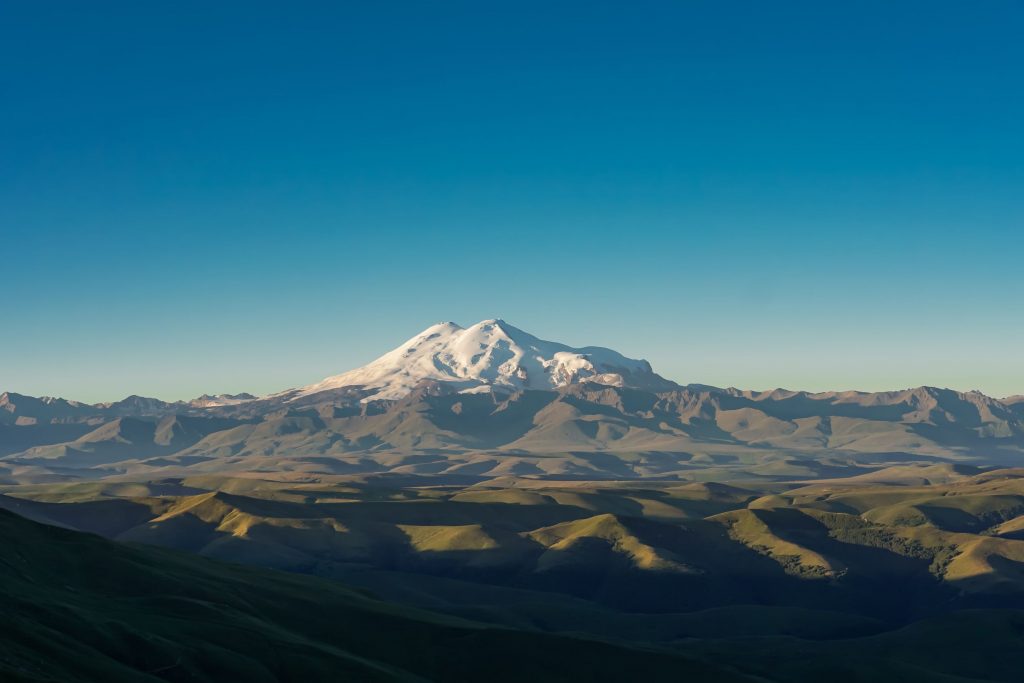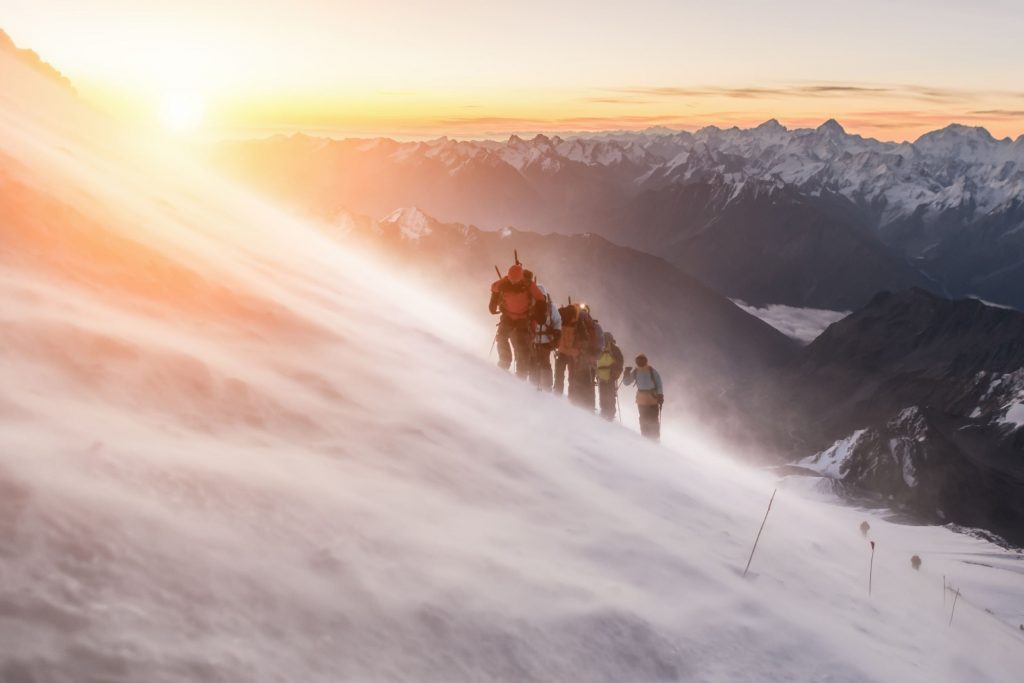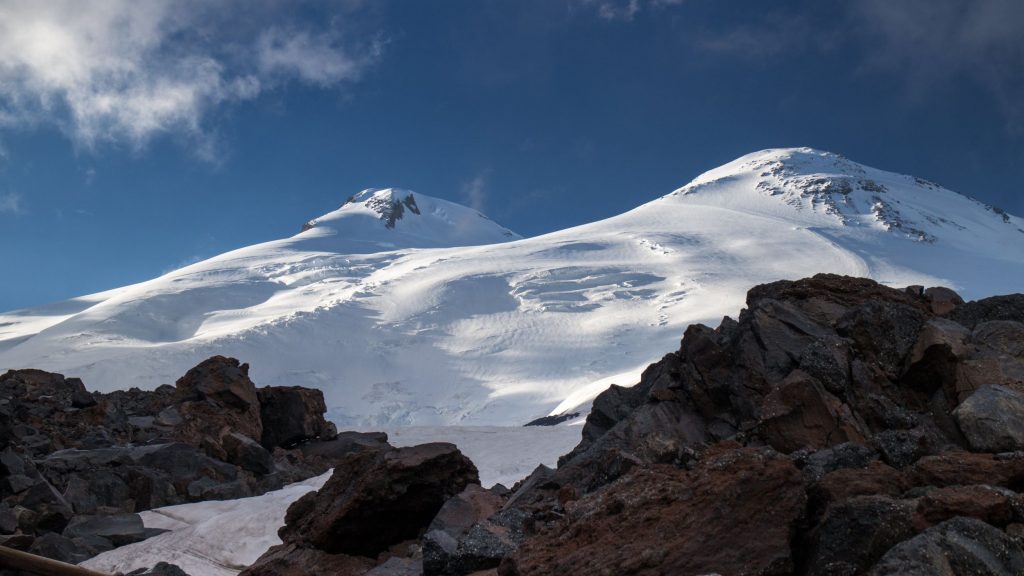
ASCENDING ELBRUS – HOW TO ORGANIZE SUCH AN EXPEDITION?
When you've already treaded all the paths in the Tatra Mountains and tasted high-mountain tourism in an Alpine style, more ambitious goals will start tempting you – it's a natural progression in the life of every mountain enthusiast. In your considerations of "What's next?" Elbrus will undoubtedly come up. It's a popular destination among Polish climbers that allows you to experience what it's like to conquer one of the peaks of the Seven Summits. What is the ascent of Elbrus like, and how can you organize a trip to the Caucasus?
WHAT WILL YOU LEARN FROM THIS ARTICLE?
- How to organize a trip to Elbrus?
- What documents will be required for entry into Russia?
- What is the process of acclimatization before summiting the Roof of the Caucasus?
- What is the ascent of Elbrus like, and what should you expect along the way?
IN BRIEF
You can organize a trip to Elbrus either independently or with the support of a travel agency. The best way to reach the destination is by plane (first, a flight to Mineralnye Vody with a layover in Moscow, and then private transport to the village of Azau). A visa is required for entry into the Russian Federation. The trek to Elbrus starts in Azau. As part of the acclimatization process, you can climb Cheget or reach one of the higher stations of the cable car to Elbrus, reaching an altitude of almost 4,000 meters above sea level. The summit ascent of the Roof of the Caucasus begins at night to allow climbers to return to the base before the weather deteriorates, which is very common in those areas in the afternoons. The journey to the summit takes about 9 hours.
ELBRUS – CHARACTERISTICS
Elbrus, also known as the Eternal Mountain, the Mountain of Happiness, or the Lord of Winds, is an extinct volcano with two domed peaks. The lower eastern peak rises to 5,621 meters above sea level, while the higher western peak stands at 5,642 meters above sea level – and it is the goal of climbers. The massif of the Roof of the Caucasus features dozens of glaciers with a thick layer of ice, and the summit is covered with eternal snow. The best time to conquer Elbrus is during the period of July-August. In winter, its slopes in the lower parts transform into a network of ski trails.

ENTRY TO ELBRUS - GETTING TO RUSSIA
The Elbrus expedition begins in the town of Azau, a small tourist settlement. The best, fastest, and most reliable (although also the most expensive) way to get there is by flying from Warsaw to Mineralnye Vody with a stopover and transfer in Moscow, and then renting transportation to Azau. Of course, it is also possible to reach the destination by land, but that option is for the resilient. The journey takes several days, and additional diversions may include numerous inspections conducted by Belarusians and Russians on cars with foreign registrations.
An alternative is to travel through Georgia - by plane to Tbilisi and a private bus to Kazbegi, and then by marshrutkas to Vladikavkaz in Russia, and further to Nalchik and finally to Azau. This option is usually chosen by people who intend to conquer two peaks in one go: before heading to Elbrus, they climb Mount Kazbek in Georgia. This allows them to "save" some time on acclimatization.
FORMALITIES WHEN ENTERING RUSSIA
Regardless of the mode of transport, a visa must be present in your passport in order to cross the Russian border. You can obtain it at an embassy or consulate. However, it is advisable to use the services of a visa assistance agency to facilitate the process. The cost of such a service is not high (around 500 PLN together with the visa) and significantly speeds up the procedure. Obtaining a visa requires a so-called visa support, which is an official invitation issued by an authorized Russian travel agency. It is also necessary to purchase insurance.
Currently, to enter Russia, you must present a medical document confirming (in English or Russian) a negative result of a PCR test for COVID-19 conducted no earlier than 72 hours before arrival, as well as a completed form for persons staying in the territory of the Russian Federation. Travelers by car must also have a green card.
Important: upon crossing the border, you will receive a migration card (migratsionnaya kartochka), which serves as confirmation of your legal entry into Russia. You must carry it in your passport and return it upon departure - it is better not to misplace it.
Upon arrival, you must also fulfill the registration obligation, which can be done at the post office in Terskol. If you are staying in a hotel or guesthouse, the staff will handle the formalities for you, but it is advisable to make sure that the registration has been completed and request written confirmation, which should be kept until departure. The last item on the "formalities" list is reporting your mountain trip to the mountain rescuers' headquarters in Terskol. You need to provide the number of participants, contact information, and the date of departure and planned descent. Remember to report your safe return upon reaching the base - otherwise, a rescue operation will be launched after the specified descent deadline!

TYPICAL PLAN FOR CLIMBING ELBRUS
The trail to Elbrus starts in Azau. Since in winter the slopes of this Caucasus giant turn into ski trails and the town becomes a popular resort, it is well-developed and equipped. It has several hotels, restaurants, shops, souvenir markets, and equipment rentals where you can replenish any missing gear.
ACCLIMATIZATION
Azau also has a lower station of a gondola lift. You can take it up to an altitude of 3832 meters to the Gara-Bashi station, but due to the lack of acclimatization, it is better not to do so. The thinning of the air is noticeably felt at such altitudes. It's better to take a walk to the Krugozor station (2940) or higher to the Mir station (3450), and only the next day go up to Gara-Bashi. On the second day after arrival, you can also climb Czeget (3460 m), which is reached by a path along the chairlifts. The ascent is arduous, but the view from the summit rewards the effort with a panoramic view of the entire Caucasus Mountains (the Elbrus summit is not visible from Azau because it is obscured by smaller hills).
The following days involve further acclimatization with overnight stays at higher altitudes. There are several options: you can stay at the 3-star LeapRus hotel, in the so-called barrels, which are shelters made from former fuel tanks, or in more modern steel containers called Wagons. These places are located slightly below the Gara-Bashi station. At an altitude of 4055 meters, tourists also have the option of the Diesel Hut shelter, which was built in place of the famous Priut 11 shelter that burned down in 1998. After spending the night at this altitude, the next day, tourists hike to the Pastukhov Rocks (4700-4800 meters above sea level) and then descend back to the base from where they will start their summit attempt. If additional acclimatization is needed, they can return to the Diesel Hut and the next day ascend above the Rocks to an altitude of approximately 5000 meters. If the weather is good, it is possible to spend the night in a tent near the Pastukhov Rocks.

SUMMIT ATTEMPT - CLIMBING ELBRUS
The ascent towards the summit begins at night, usually around midnight, in order to reach Elbrus around noon, as weather disturbances often occur in the afternoon. However, the first and steepest part of the route can be made easier: snow groomers transport tourists to an altitude just above 5000 meters. Thanks to this ride, you can save about 4 hours of walking and conserve a significant amount of energy, although you may get very cold on the snow groomer's seat.
The first hours of the hike involve slow progress in complete darkness, illuminated only by headlamps. Climbers often emphasize that the path seems to stretch into infinity, especially since the cold of the night becomes quite noticeable. Upon reaching the Pastukhov Rocks, a steep ascent awaits, and the march becomes increasingly challenging due to the decreasing oxygen content in the air. Further, the trail traverses the lower eastern summit. This is a more dangerous section because on one side of the trail, there is a steep slope. After completing the traverse, you reach the saddle that connects both summits of the mountain, known as Saddle – this is a good place to stop and rest since it is sheltered from the wind and therefore warmer.
Passing through the saddle marks the final stretch towards the summit. There is still the ridge of the western summit to overcome. Initially, the route goes steeply uphill, but then it turns into a traverse, becoming slightly gentler. A fixed rope is installed on this section – it is advisable to clip into it as the terrain can be icy. After passing the roped section, climbers are greeted with a view of a vast snowy field and... the summit of Mount Elbrus! From this perspective, the Elbrus summit is a small, rather flat mound. However, the views that unfold from there confirm that you have reached an altitude of 5642 meters above sea level. On a clear day, you can see a significant part of the Caucasus Mountains.
If you depart from the base camp around midnight, you will reach the summit around 9 a.m. The return journey should take approximately 4 hours – it follows the same route, but in daylight, the hike is much easier. At an altitude of 5000 meters, more exhausted climbers can take advantage of a snow groomer or snowmobile ride back to the Gara-Bashi station.
Mountaineering is often perceived as an extreme sport reserved only for professional mountaineers. Mountains like Elbrus prove that it's not true – "ordinary" mountaineers can also climb the Caucasus Mountains. Of course, good physical condition and mountain experience gained in the Tatra or Alps, as well as proper preparation, are essential. You can learn what to bring to the highest peak of the Caucasus from our next article Wyprawa na Elbrus – sprzęt (in Polish).
Image source: shutterstock.com